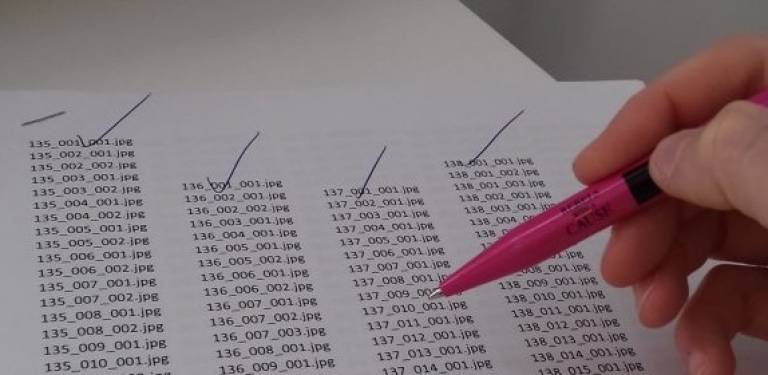Bentham Papers digitised
1 June 2018
Bentham's manuscripts are now available digitally

More than 95000 images of Bentham's manuscripts are now available in electronic form, as part of the Bentham Project’s Transcribe Bentham crowdsourcing initiative. These digitised images will make Bentham's philosophy more accessible to researchers and members of the public.
Around 80000 images were captured from 173 boxes of Bentham Papers held in Special Collections at UCL, which include Bentham’s thoughts on his Constitutional Code, the Panopticon prison and the Church of England, amongst other subjects. A further 20 boxes of material from The British Library have also been digitised, some of which comprise letters to and from Bentham and his family. These images are linked to detailed metadata prepared by Bentham Project researchers, some of which is available online via the Bentham Papers Database.
Lots of this material is already available online via the Transcription Desk and the digital repository of the UCL Library. Over the coming months, the rest of the digitised papers will be uploaded to the websites of UCL and The British Library.
The Transcribe Bentham initiative began in 2010, and in 2012 the Andrew W. Mellon Foundation provided funding to digitise Bentham manuscripts held in The British Library, thereby digitally uniting the two largest collections of Bentham material for the first time.
The digitisation process involved taking images of manuscripts before refining their quality and matching them to metadata records.
These images are an enviable resource for scholarship and public engagement, making it possible for anyone around the world to read Bentham’s ideas in their original form. Transcriptions provided by volunteers on Transcribe Bentham are helping to enhance the accessibility of these papers, meaning that they can be explored more easily. Digitisation speeds up the Bentham Project’s work on the scholarly edition of Bentham’s writings. Researchers at the project can now easily consult digital images on their computer when they wish to transcribe a page or double-check the spelling of a difficult word. The images and transcripts represent a dataset that can also be exploited with new digital techniques. The project experimented with training Handwritten Text Recognition technology to process Bentham’s handwriting as part of the READ project and there are intriguing possibilities for text mining, mapping and network analysis ready for future scholars.
A handful of Bentham folios are held in other archives around the world.
This digital milestone will be marked with a celebratory event at UCL on 6 June for everyone who has been involved with or supported the initiative.
If you have any questions about the digitisation or would like to view images that have not yet been put online, feel free to contact Transcribe Bentham.
Funding for the digitisation was provided by the Arts and Humanities Research Council, the Andrew W. Mellon Foundation, UCL Digital Media Services and the European Union’s Horizon 2020 research and innovation programme. The Bentham Project is also recognised as a British Academy Research Project.
 Close
Close

